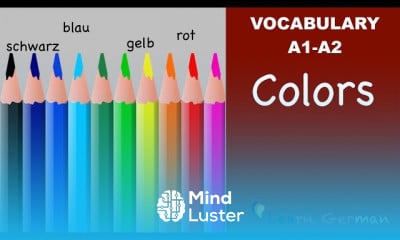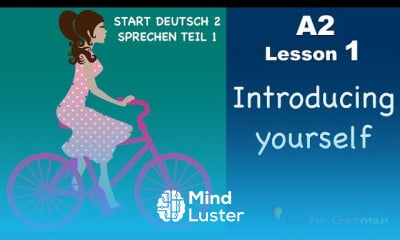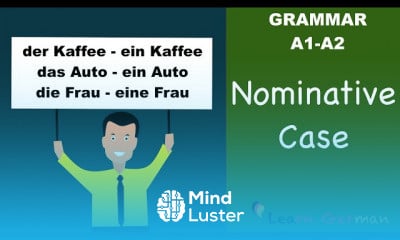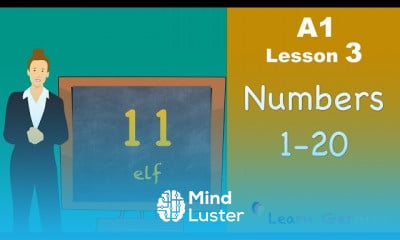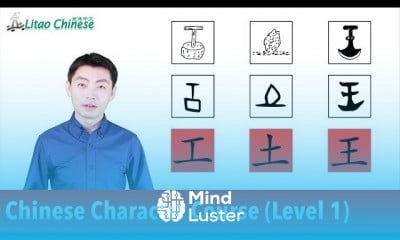Intermediate Level Lesson 18 Practical English Drama
Share your inquiries now with community members
Click Here
Sign up Now
Lessons List | 18
Lesson
Comments
Related Courses in Languages
Course Description
Drama was introduced to Britain from Europe by the Romans, and auditoriums were constructed across the country for this purpose.
But England didn't exist until hundreds of years after the Romans left.
Mystery plays and miracle plays (sometimes distinguished as two different forms,[1] although the terms are often used interchangeably) are among the earliest formally developed plays in medieval Europe. Medieval mystery plays focused on the representation of Bible stories in churches as tableaux with accompanying antiphonal song. They developed from the 10th to the 16th century, reaching the height of their popularity in the 15th century before being rendered obsolete by the rise of professional theatre. The name derives from mystery used in its sense of miracle,[2] but an occasionally quoted derivation is from misterium, meaning craft, a play performed by the craft guilds.[3]
There are four complete or nearly complete extant English biblical collections of plays from the late medieval period; although these collections are sometimes referred to as "cycles," it is now believed that this term may attribute to these collections more coherence than they in fact possess. The most complete is the York cycle of forty-eight pageants. They were performed in the city of York, from the middle of the fourteenth century until 1569. There are also the Towneley plays of thirty-two pageants, once thought to have been a true 'cycle' of plays and most likely performed around the Feast of Corpus Christi probably in the town of Wakefield, England during the late Middle Ages until 1576. The Ludus Coventriae (also called the N Town plays" or Hegge cycle), now generally agreed to be a redacted compilation of at least three older, unrelated plays, and the Chester cycle of twenty-four pageants, now generally agreed to be an Elizabethan reconstruction of older medieval traditions. Also extant are two pageants from a New Testament cycle acted at Coventry and one pageant each from Norwich and Newcastle upon Tyne. Additionally, a fifteenth-century play of the life of Mary Magdalene, The Brome Abraham and Isaac and a sixteenth-century play of the Conversion of Saint Paul exist, all hailing from East Anglia. Besides the Middle English drama, there are three surviving plays in Cornish known as the Ordinalia.
These biblical plays differ widely in content. Most contain episodes such as the Fall of Lucifer, the Creation and Fall of Man, Cain and Abel, Noah and the Flood, Abraham and Isaac, the Nativity, the Raising of Lazarus, the Passion, and the Resurrection. Other pageants included the story of Moses, the Procession of the Prophets, Christ's Baptism, the Temptation in the Wilderness, and the Assumption and Coronation of the Virgin. In given cycles, the plays came to be sponsored by the newly emerging Medieval craft guilds. The York mercers, for example, sponsored the Doomsday pageant. Other guilds presented scenes appropriate to their trade: the building of the Ark from the carpenters' guild; the five loaves and fishes miracle from the bakers; and the visit of the Magi, with their offerings of gold, frankincense and myrrh, from the goldsmiths.[4][5] The guild associations are not, however, to be understood as the method of production for all towns. While the Chester pageants are associated with guilds, there is no indication that the N-Town plays are either associated with guilds or performed on pageant wagons. Perhaps the most famous of the mystery plays, at least to modern readers and audiences, are those of Wakefield. Unfortunately, we cannot know whether the plays of the Towneley manuscript are actually the plays performed at Wakefield but a reference in the Second Shepherds' Play to Horbery Shrogys ([5] line 454) is strongly suggestive
Morality plays
The morality play is a genre of Medieval and early Tudor theatrical entertainment. In their own time, these plays were known as "interludes", a broader term given to dramas with or without a moral theme.[6] Morality plays are a type of allegory in which the protagonist is met by personifications of various moral attributes who try to prompt him to choose a Godly life over one of evil. The plays were most popular in Europe during the 15th and 16th centuries. Having grown out of the religiously based mystery plays of the Middle Ages, they represented a shift towards a more secular base for European theatre.
The Somonyng of Everyman (The Summoning of Everyman), usually referred to simply as Everyman, is a late 15th-century English morality play. Like John Bunyan's 1678 Christian novel Pilgrim's Progress, Everyman examines the question of Christian salvation by use of allegorical characters, and what Man must do to attain it. The premise is that the good and evil deeds of one's life will be tallied by God after death, as in a ledger book. The play is the allegorical accounting of the life of Everyman, who represents all mankind. In the course of the action, Everyman tries to convince other characters to accompany him in the hope of improving his account. All the characters are also allegorical, each personifying an abstract idea such as Fellowship, [material] Goods, and Knowledge. The conflict between good and evil is dramatized by the interactions between characters.
Trends
Facebook Business Page Settings
Python for AI for beginners
Natural Language Processing with Python
Python programming language
Tools and toolbar in Photoshop for beginners
MS Excel
React Complete Series
Learning English Speaking
English greetings and responses
SUM and SUMIF function in excel
AI fundamentals for beginners
creating a marketing plan tools
Neural network optimization techniques
CSS basics for beginners
Excel skills for busines intermediate
Improve english grammar skills
Introduction To Cyber Security
Daily conversational English
Excel Course Basic to Advanced
Computer architecture
Recent
Python for AI for beginners
Tools and toolbar in Photoshop for beginners
Neural network optimization techniques
SUM and SUMIF function in excel
Machine learning algorithms types
Linux command line essentials
Building a hospital landing page in React JS
Salesforce certified associate
CSS basics for beginners
8x8 LED matrix with arduino for beginners
Building an arduino Light gun basics
Software testing basics for beginners
Video encoding for beginners
Computer security for beginners
Network types for beginners
Compiler optimization techniques
Software engineering basics
Audio editing basics for beginners
FFMPEG advanced techniques
Node based data structures in Java










